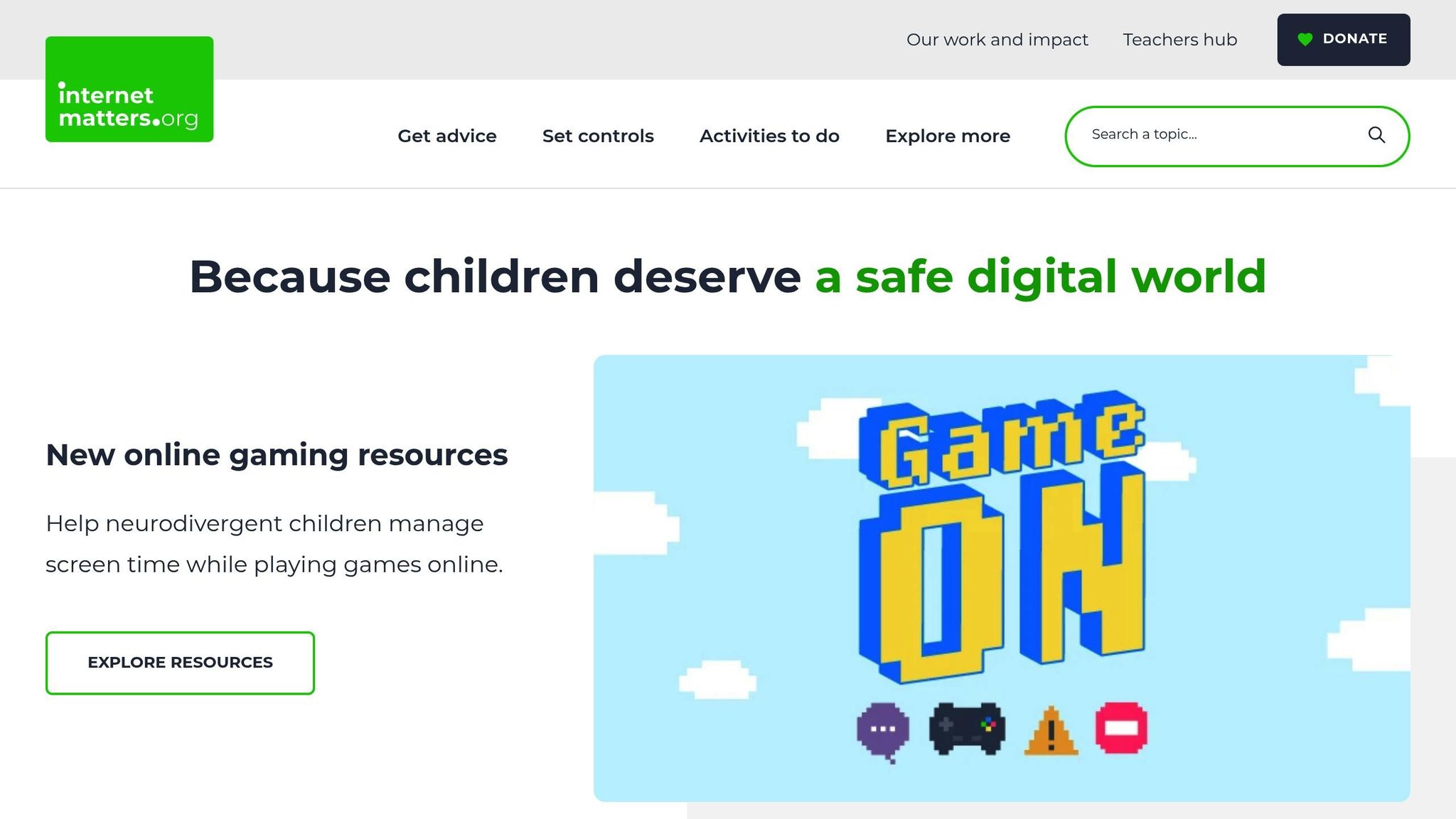Cyberbullying can deeply affect a child’s mental health, leading to anxiety, depression, or social withdrawal. Here’s how you can help your child recover:
- Reassure Them: Let them know it’s not their fault. Say, "This isn’t your fault", to affirm they aren’t to blame.
- Listen Without Judgment: Create a safe space where they feel heard and supported.
- Document Evidence: Save screenshots of harmful messages or posts with timestamps to report incidents to schools or authorities.
- Boost Confidence: Encourage activities like art, sports, or volunteering to help them regain self-esteem.
- Seek Therapy If Needed: Watch for signs like persistent hopelessness, social withdrawal, or anxiety, and consider professional counseling.
Healing takes time, but with your support, your child can recover and regain confidence. Stay involved, communicate openly, and consult professionals if necessary.
What to do if my child is being cyberbullied | Internet Matters

Signs Your Child Is Being Cyberbullied
It’s crucial to notice the warning signs of cyberbullying. While some children might openly talk about their experiences, others may stay silent. Pay attention to any abrupt changes in their behavior.
Changes in Mood and Behavior
After using their devices, does your child seem unusually sad, anxious, or irritable? Are they withdrawing from family or friends? These shifts in mood and behavior, especially if they persist, could be signs of ongoing stress linked to cyberbullying.
School and Health Changes
A drop in enthusiasm for school or extracurricular activities can also be a red flag. If your child suddenly avoids these responsibilities or interests, it might be time to have a gentle, open conversation. This can help uncover any issues and show them you’re there to support them.
Below are some clear indicators to watch for in their mood, behavior, and school involvement that could signal they’re experiencing cyberbullying.
How to Support Your Child
When cyberbullying happens, it’s important to provide emotional support and create a safe environment where your child feels comfortable opening up. Here are some steps you can take to help your child.
Reassure Them It’s Not Their Fault
Let your child know they are not to blame for the bullying.
- Be clear and supportive: Say things like, "This is not your fault" to reinforce that the problem stems from the bully’s actions, not anything they did.
Listen Attentively and Without Judgment
Give your child your full attention and let them express their feelings without fear of criticism. Active listening shows you care and helps them feel heard.
sbb-itb-a1a8504
Steps to Stop Cyberbullying
Emotional support is important, but addressing the issue also means taking practical steps. One key action is to document instances of cyberbullying. Keep records that can be shared with school officials or law enforcement if needed.
Save Evidence
Before removing any messages or posts:
- Take screenshots of messages, emails, or posts, and save them.
- Record details like dates, times, and any witnesses.
- Store the evidence securely, either on your computer or in cloud storage.
- Make sure timestamps are visible on screenshots to confirm the incident’s timeline.
Help Your Child Heal
Support your child emotionally with activities that help them regain strength and build healthy connections.
Activities to Boost Confidence
After offering reassurance, encourage your child to take part in activities that can help rebuild their confidence:
- Creative Outlets: Activities like drawing, painting, playing music, or writing can help them process emotions and feel more in control.
- Physical Exercise: Sports, dance, or martial arts not only improve self-esteem but also provide positive social interactions and release feel-good endorphins.
- Helping Others: Volunteering at places like animal shelters can nurture empathy while giving them a constructive way to channel their energy.
- Learning Something New: Picking up new skills – like coding, cooking, or crafting – can give them a sense of accomplishment and a positive focus beyond the cyberbullying experience.
While these activities can be helpful, it’s also important to keep an eye out for signs that professional help might be necessary.
When to Consider Therapy
Sometimes, professional support can make a big difference in helping your child recover. Look out for these signs:
-
Ongoing Concerns
- Trouble sleeping or eating
- Avoiding activities or friends they used to enjoy
- Anxiety around using digital devices
- Falling grades or struggles at school
-
Serious Red Flags
- Persistent feelings of hopelessness
- Unexplained physical complaints
- Long periods of social withdrawal
- Noticeable changes in behavior
If you notice these signs, consider finding a therapist who specializes in areas like:
- Cognitive Behavioral Therapy (CBT)
- Trauma-focused counseling
- Cyberbullying recovery and digital wellness
Many schools have counseling services or can connect you with therapists experienced in supporting young people affected by cyberbullying.
Conclusion: Next Steps for Parents
Now that you’ve taken the initial steps, here’s how you can continue supporting your child. Act quickly to address the situation while providing consistent emotional support. Healing takes time, so patience and understanding are key.
Actions to focus on:
- Keep an eye on your child’s behavior while maintaining open, honest communication.
- Work closely with your child’s school to ensure they receive continued support.
- Explore local parent support groups to share experiences and gain helpful strategies.
Beyond practical steps, prioritize emotional connection. If professional help is needed, consider specialists in areas like:
- Trauma recovery and cyberbullying for young people
- Counseling focused on healthy digital habits
- Family-focused therapy sessions
Stay actively involved in your child’s recovery, but also allow them the space to regain their confidence. Build your relationship through positive shared experiences and open conversations. If your child shows ongoing signs of distress, consult a mental health professional without delay.
Healing isn’t a straight path, but your consistent support can make all the difference in helping your child bounce back stronger.





